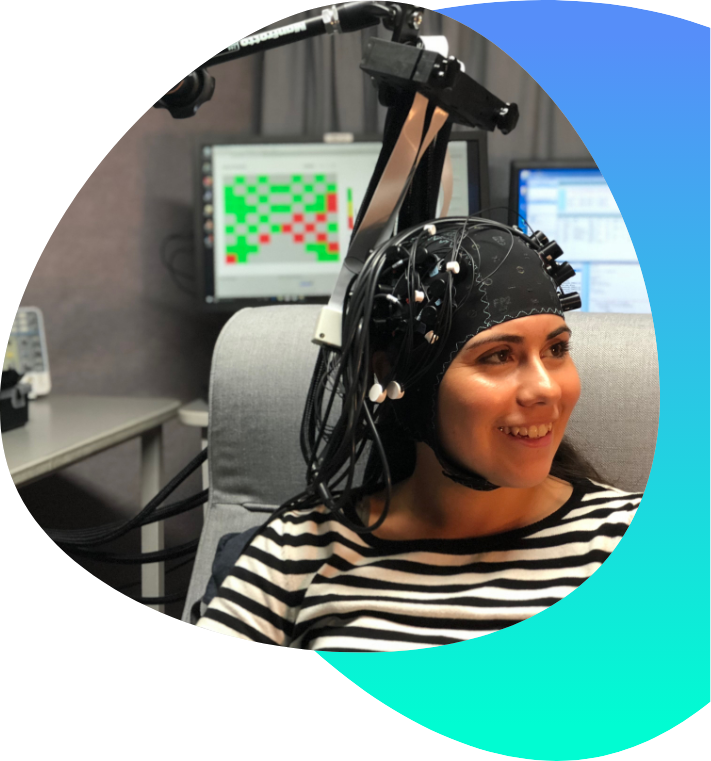Establishing an objective measure of tinnitus
Watch a 2 minute video on our tinnitus research
Why is a new diagnostic tool for tinnitus needed?
Tinnitus is the experience of ringing, buzzing, whirring or other noises in one or both ears. The sounds heard by people with tinnitus don’t exist externally.
Up to 1 in 8 Australians have tinnitus that severely affects their quality of life [1]. It has many causes and can lead to anxiety, depression and sleep issues.
Currently there is no cure for tinnitus and treatment tends to treat distress symptoms or provide ways to mask the noises, but they are not always effective.
Tinnitus is described differently by everyone who experiences it, and reliance on self-reported symptoms makes diagnosis and monitoring of this condition difficult.
Finding a way to measure the presence and severity of tinnitus will inform diagnosis, treatment selection and could lead to the development of new treatments.
Finding a new way to measure tinnitus
Our tinnitus research team at the Bionics Institute have developed an objective measure of tinnitus using a non-invasive optical imaging technique.
The optical imaging device uses a cap to shine near-infrared light over the head and measure changes in blood oxygen levels in the brain.
The light reflected back provides detailed information on brain activity.
This information is recorded on a computer and analysed by researchers, with the aim of setting a baseline for tracking changes in the brain triggered by tinnitus.
Next steps for Bionics Institute researchers
The device and analysis methods have been tested in a small study on people with tinnitus and people with no symptoms.
The results show differences in brain activity between people with and without tinnitus as well as individuals experiencing tinnitus at different severity levels.
This and further information gathered from further research trial participants will be used to develop a definitive test of the presence and severity of tinnitus to aid diagnosis and develop potential treatments.
Get involved with Bionics Institute tinnitus research
Our researchers need to perform tests on more people, both with and without tinnitus.
We are looking for volunteers to visit our facilities in East Melbourne and have a test using the optical imaging device.
Currently, we are seeking people who:
– Experience tinnitus all the time, aged 18-65
– Have no history of tinnitus, aged 50-65
– Have a cochlear implant and experience tinnitus, aged over 18.
If you would like to take part in the research, you can find out more by clicking on the link below.
The research team
BI researchers:
Dr Mehrnaz Shoushtarian (PI), Associate Professor James Fallon, Michelle Bravo and Shreyasi Datta
More information for researchers
We are working on developing an objective measure of tinnitus using a non-invasive brain imaging technique called functional near-infrared spectroscopy (fNIRS) together with machine learning analysis techniques. Our initial study showed that fNIRS is a viable technique for measuring tinnitus-related brain activity.
We recorded fNIRS signals both at rest and in response to different stimuli and extracted features from the recordings under different conditions. We then applied machine learning methods, including feature extraction and classification, to the fNIRS features.
Our algorithms were able to classify patients with tinnitus and controls as well as tinnitus at different severity levels with promising accuracy (see publication below). We are now collecting further data and improving our algorithms to verify our initial findings.
Publications
Shoushtarian M, et al. Multimodal assessment of tinnitus using functional near-infrared spectroscopy and psychophysiological measures, International Journal of Audiology. DOI:10.1080/14992027.2023.2296866
Shoushtarian M, et al. (2020) Objective measurement of tinnitus using functional near-infrared spectroscopy and machine learning. DOI: https://doi.org/10.1371/journal.pone.0241695
